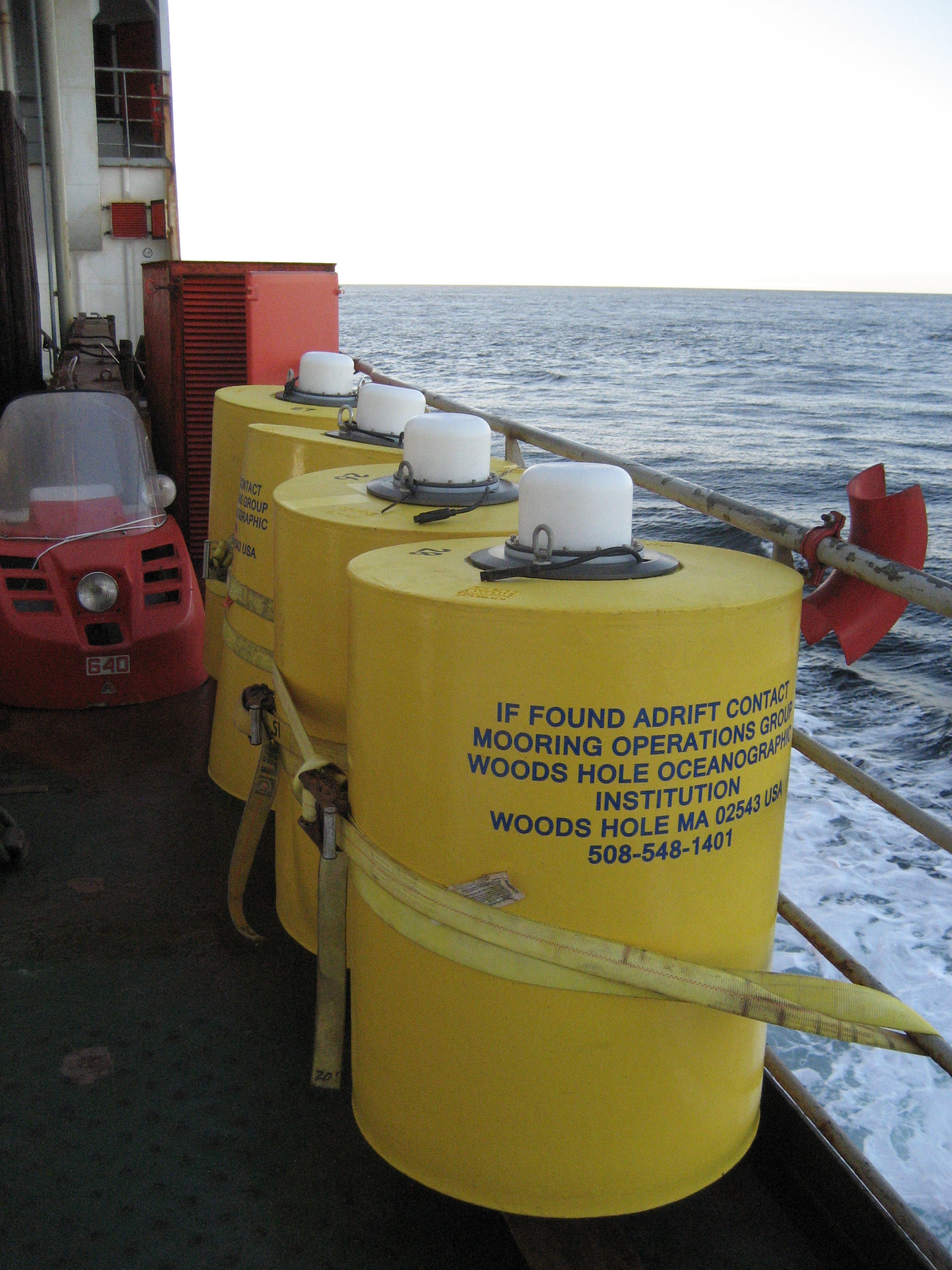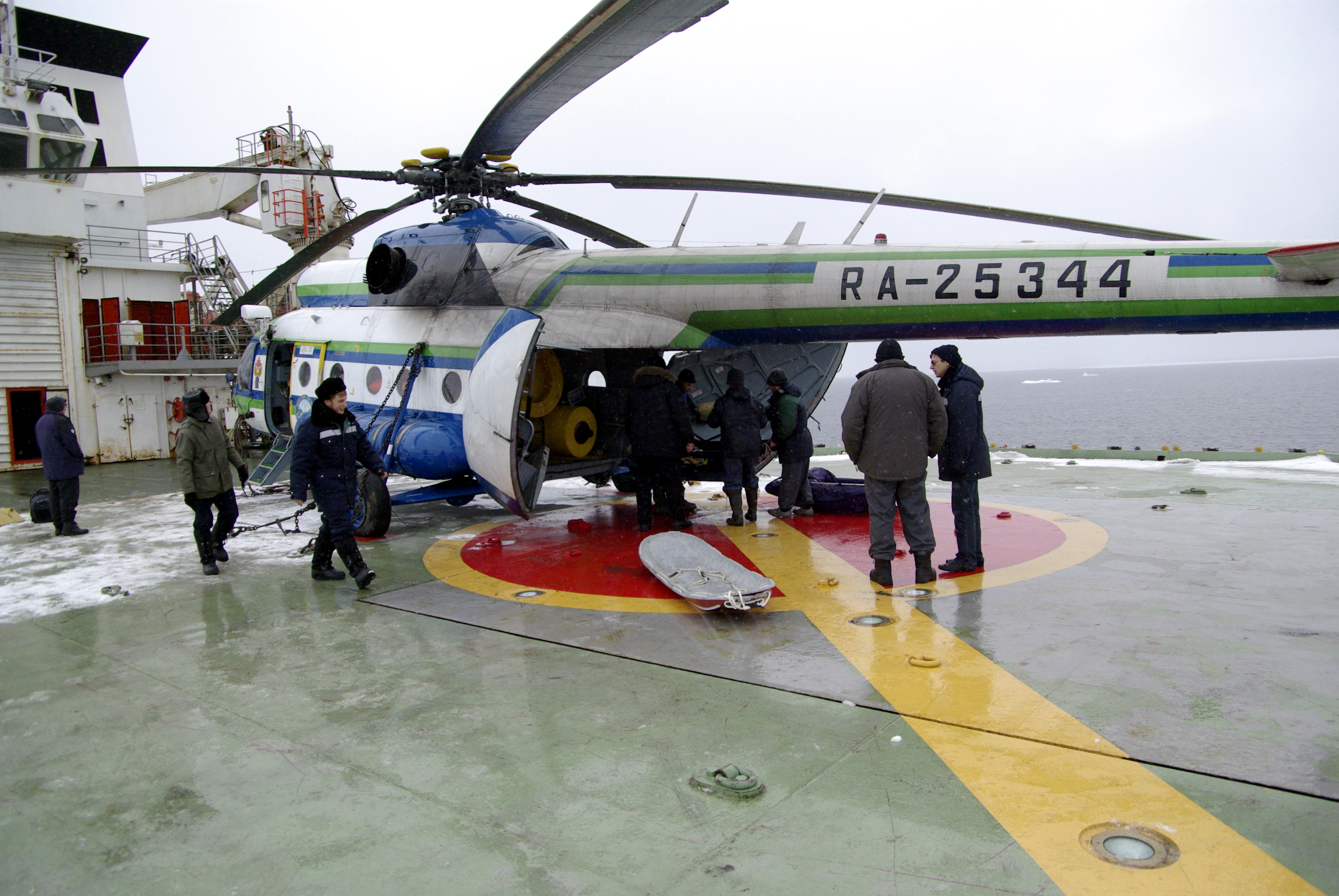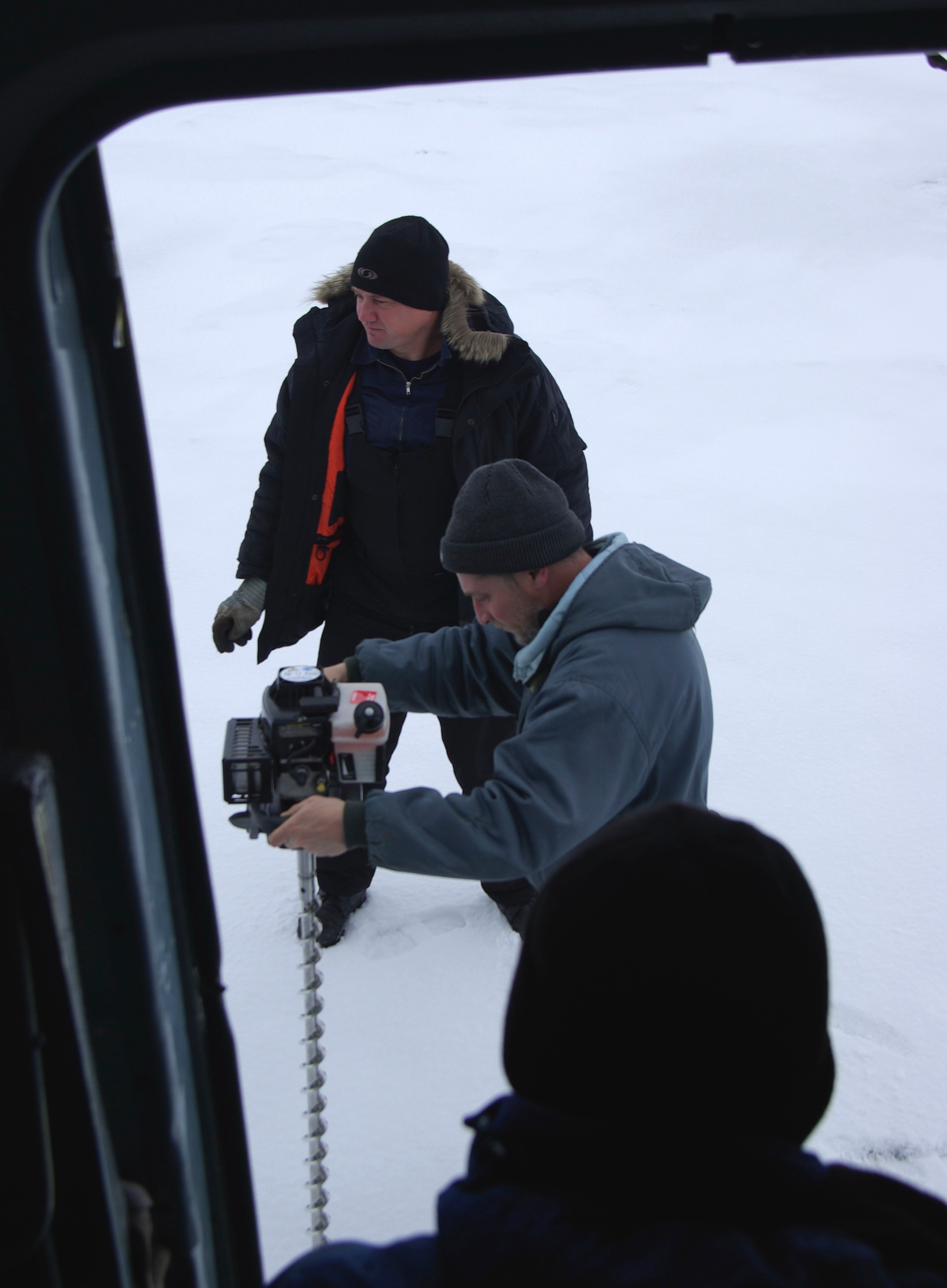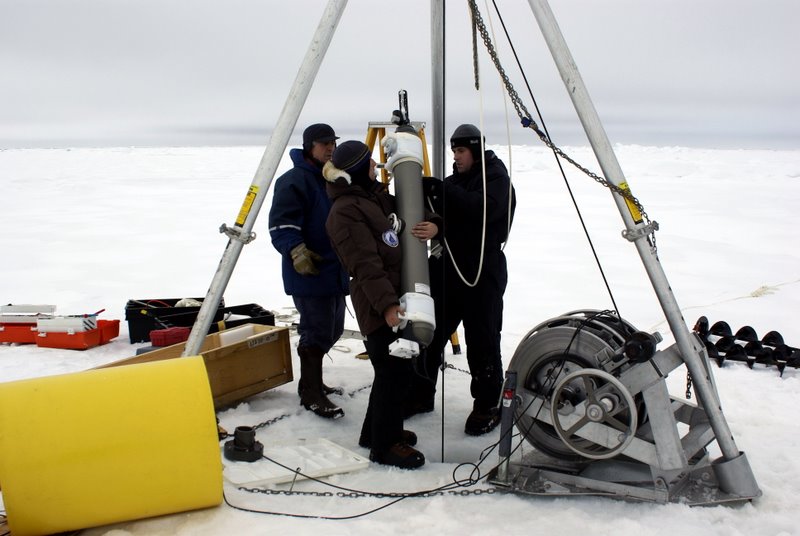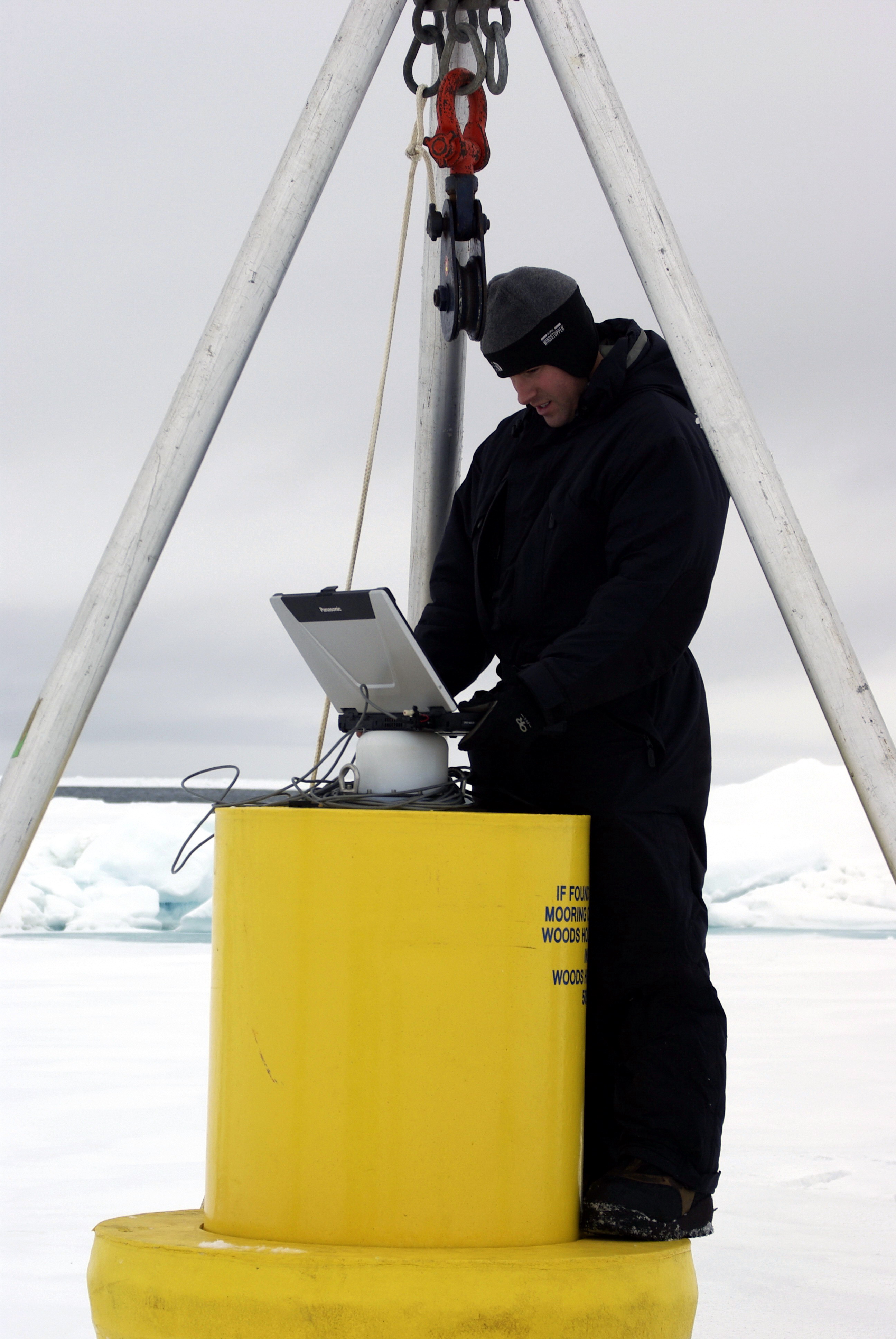ITP29 Deployment Operations
The first ITP deployed from the Akademik Federov in 2008, ITP 29 was deployed remotely using the ship's contracted helicopter from St. Petersburg. Prior to the first flight, a meeting was held by the chief scientist with the deployment team and flight team to ensure that everyone understood the desired ice floe requirements and planned operations for the ITP installation. The flight team were well seasoned veterans of the Arctic and knowledgeable about choosing the proper ice conditions. Soon afterwards, the MI-8 helicopter was loaded with everything needed for the deployment and final preparations were made for the flight.
Flight time was roughly one hour to the first potential floe spotted from the air. The helicopter landed and the ice drilled and found to be only 1.8 meters thick. Looking for a floe greater than 2 m thick, it was decided to continue the search. The second landing of the helicopter found a floe that was 2.8 meters thick at the landing spot -- a perfect find amongst first year ice which typically measured less than 1.5 meters.
After unloading the deployment team and apparatus, the helicopter departed to conduct other business. The deployment took roughly three hours to complete and communications between the profiling instrument and the surface package tested well. The deployment gear was repacked and the helicopter was called, and the team snacked on tea, cheese and salami while they waited for their ride back to the ship.
